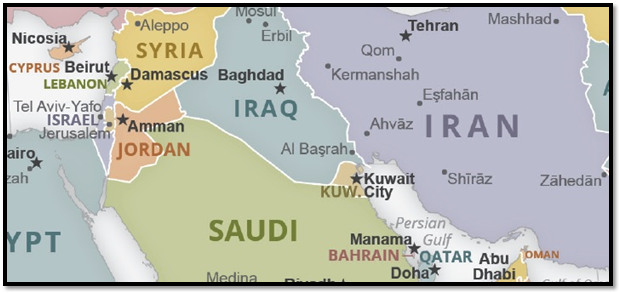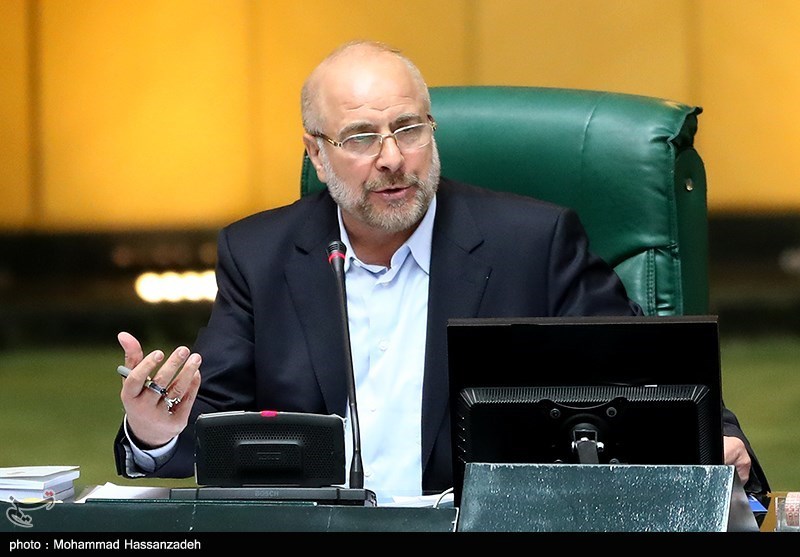How far is Israel willing to go to undermine Iran's nuclear program? What are Israel’s red lines?
Since at least 2000, Israel has sought to prevent Iran from becoming a military nuclear power—or the tenth nation to get the bomb. The urgency to develop overt and covert operations has increased because of Iran’s growing arsenal of long-range missiles, its entrenchment in Syria, and its attempts to provide Hezbollah with precision missiles that could hit Israel.
 Israel would have preferred international diplomatic and economic pressure to force Iran to forfeit its nuclear ambitions. But as Iran has neared the nuclear threshold, Israel repeatedly warned that it is will do whatever is necessary to stop the program. It has employed kinetic, cyber, and covert operations to delay Iran's nuclear program.
Israel would have preferred international diplomatic and economic pressure to force Iran to forfeit its nuclear ambitions. But as Iran has neared the nuclear threshold, Israel repeatedly warned that it is will do whatever is necessary to stop the program. It has employed kinetic, cyber, and covert operations to delay Iran's nuclear program.
Israel's red lines are related to Iran's distance from breakout capability, which depends mainly on the amount of fissile material that Tehran stockpiles. If Israel concludes that these measures are insufficient to prevent Iran from becoming a threshold state – and assuming that the U.S. is unwilling to use military force to thwart the Iranian program – Israel would probably turn to the military option to set back Iran's nuclear progress by several years.
How has the joint U.S.-Israeli campaign to undermine Iran’s nuclear program evolved during the last decade?
Over the years, Israel and the U.S. have reportedly resorted to a variety of covert activities to increase the time needed for Iran to cross the nuclear threshold. These operations coincided with U.S.-led diplomatic initiatives and international economic pressure. They reportedly included:
- sabotage, bombings and orchestrated malfunctions at multiple sites of Iran's nuclear and long-range missiles programs,
- disrupting operations at Iranian nuclear facilities, notably by cyberattacks such as Stuxnet and Duqu,
- espionage on Iranian nuclear facilities, notably through the use of Flame malware,
- and the assassination of Iranian officials involved in the nuclear program, primarily nuclear scientists.
Most of these operations took place before the nuclear diplomacy between Iran and the P5+1 began in 2013; the talks eventually led to the nuclear deal, known formally as the Joint Comprehensive of Action (JCPOA), in mid-2015. Before the diplomacy began, Israel also reportedly prepared for a potential airstrike against Iranian nuclear sites. After the JCPOA, Israel appeared to refrain from major covert operations, although intelligence efforts continued. In January 2018, a Mossad operation seized the Iranian nuclear archive from a Tehran warehouse.
What are the pros and cons of a covert campaign – including assassinations, raids, bombings and cyber-attacks – compared to direct military strikes?
A successful military strike could simultaneously hit a number of nuclear targets, inflict significant damage on the Iranian nuclear program, and set it back considerably – probably between two and four years depending on the type of attack and whether carried out by the U.S. or Israel. But any a strike would be a highly complex operation. If carried out by Israel, an operation would require prior coordination with Washington. It could also have serious consequences, which could include:
- A military response by Iran, potentially triggering a full-scale military confrontation between Israel and Iran, which could activate Hezbollah operations from Lebanon,
- Drastic political measures by Iran, including withdrawal from the Nonproliferation Treaty, the world’s most important treaty on nuclear weapons,
- Or the end of Iran’s cooperation with the International Atomic Energy Agency.
A military operation might push back Iran’s program, but it has several features – its program is a decentralized program and its nuclear technology capabilities are now all indigenous – that could enable Tehran to rehabilitate its facilities in a relatively short time. As a result, a direct military option would probably be used only if all other options for delaying the Iranian nuclear program failed.
Covert activities, on the other hand, can be carried out gradually and with low visibility. They can delay Iran's nuclear progress at a much lower cost and without dragging Israel or the U.S. into a full-scale military confrontation. At the same time, however, covert action tends to be limited in scope and usually only capable of inflicting partial or temporary damage to some elements of a nuclear program. Covert operations on an ongoing basis could also lead Iran to enact additional precautionary measures – in cyber or its military – to reinforce the security of its nuclear facilities, in turn making future operations more difficult.
How does the Natanz explosion in mid-2020 differ from previous actions that targeted Iran’s nuclear and missile programs?
First, to the best of public knowledge, this is the only significant sabotage at a nuclear facility in Iran since the signing of the JCPOA in 2015.
Second, according to media reports, the attack appears to have been carried out using an explosive device detonated inside the facility. If that is indeed the case – and it was not the result of an explosion caused by a remote cyber-attack – it would indicate that some foreign power has high-quality intelligence as well as the operational capability to penetrate into a well-secured nuclear facility.
Third, damage to the facility from the blast appeared substantial. It has apparently led to a significant delay in Iran's ability to assemble the advanced centrifuges capable of producing enriched uranium at a faster rate and in larger quantities.
NEW: High-resolution commercial satellite imagery from July 4 and 5, 2020, shows that the Iran Centrifuge Assembly Center (ICAC) at the Natanz Enrichment Site has suffered significant and likely irreparable damage to its main assembly hall section. https://t.co/1RbDlIJypM pic.twitter.com/wgwpVNouQ8
— Inst for Science (@TheGoodISIS) July 8, 2020
Why did the Natanz explosion happen now? Is there an implicit timetable for action?
Since July 2019, a year after the U.S. withdrew from the JCPOA and reimposed the economic sanctions, Tehran has reduced its commitments to the nuclear deal that each reduced the breakout time to make a bomb from around a year to several months.
- began to enrich uranium beyond the 3.67% level permitted by the agreement,
- accumulated eight times the amount of fissile material allowed by the JCPOA,
- began enriching uranium in the underground facility at Fordow,
- and engaged in research and development of advanced centrifuges.
After Trump withdrew from the nuclear deal, Israel assessed that the new U.S. “maximum pressure” strategy would force Tehran to return to negotiations and agree to additional concessions on its nuclear program. It even speculated that the pressure might lead to the regime’s collapse. But two years later, Iran had not only refused to return to the negotiating table, it also gradually escalated violations of the deal. If Israel is behind the sabotage at Natanz, the operation could indicate that Israel believes covert operations had to be resumed to delay Iran’s nuclear program, especially since the Trump administration is unlikely to consider overt military action amid the COVID-19 pandemic, the economic crisis, and the impending election.
Israel also appeared to want to capitalize on the brief window before the November 2020 elections. Israel may believe that a Biden victory would lead to the resumption of diplomacy between Iran and the United States – and possibly even a return to the JCPOA and sanctions relief for Iran. Israel may not feel it has the flexibility to carry out bold covert acts to limit Iran’s nuclear capabilities after the presidential election.
What impact have the spate of incidents had in Iran? Is there a cumulative effect or a psychological impact on the public?
The overall impact of the recent incidents—whether intentional acts of sabotage or to accidents from neglected infrastructure, mismanagement or human error—has created growing pressure on the regime and a sense of insecurity among the Iranian public. The string of incidents has increased the public’s lack of confidence in the government’s ability to protect them. The incidents compound distrust that already existed due to rampant mismanagement and the government’s failure to address economic and social grievances.
The trend could further exacerbate the regime's crisis of legitimacy, which has been increasingly evident in:
- waves of protests that have played out in all 31 provinces since late 2017,
- strong public criticism of the regime's conduct, which was especially pronounced after the Revolutionary Guards shot down a Ukrainian passenger plane in January 2020,
- and the low voter turnout in the February 2020 parliamentary elections.
What pressures are Iran's leaders under to respond? What are Tehran's options?
The Iranian leadership is undoubtedly under growing pressure, not just because from the spate of incidents. In recent months, the economic crisis in Iran has intensified. The outbreak of COVID-19 went uncontrolled, further draining resources. And the tensions between Tehran and the West have risen. In June, the International Atomic Energy Agency (IAEA) board of governors adopted - for the first time since 2012 - a critical resolution demanding that Iran provide the watchdog agency's inspectors with the access to suspected nuclear sites. In addition, the U.S. pushed a resolution at the U.N. Security Council to extend the international embargo on the sale of conventional weapons to Iran. If the world refuses to act, Washington threatened to activate the “snapback” mechanism which could renew all sanctions that were imposed on Iran before the JCPOA deal.

The massive explosion at Natanz – a key facility for uranium enrichment – has particularly increased pressure on the Iranian leaders to respond. A growing number of the hardliners, who regained full control of the Iranian parliament (Majles) in the February election, have demanded that the government take harsher steps, such as either withdrawing from the NPT’s Additional Protocol or withdrawing from the NPT entirely. Hardliners see the lack of response as a demonstration of weakness that erodes Iran's deterrence capabilities long-term.
Iran’s leaders view the Natanz attack as part of a broader plan – led by the Trump administration and Israel – to kill the JCPOA and ensure that Biden, if elected, would not be able to return to the deal. They have debated whether to respond now or wait until the U.S. election in the hope that a Democratic victory might change the U.S. calculus and improve Tehran’s strategic position. Iran could respond in a variety of ways:
- adopting political measures, such as reducing its cooperation with the IAEA,
- initiating a cyber response, for example, another attack against Israeli infrastructure similar to the recent attempt to disrupt Israel’s water supply,
- or take a kinetic retaliatory action, for example by resuming the covert activity against Israeli/U.S./ Saudi targets in the region, either directly or through proxies.
What are the prospects for further escalation? And what are the risks or dangers?
In the absence of diplomacy to de-escalate current tensions, the chances of escalation are high. Further Iranian violations of the JCPOA are to be expected. Any advance in Iran’s nuclear program – considered by Israel to be an existential threat to its national security – is likely to be met with continued Israeli initiatives to disrupt the program, even at the cost of further escalation.
If Iran reduces its cooperation with the IAEA, then Europe, China and Russia will find it difficult to continue support for the JCPOA and diplomacy with Iran. That, in turn, could lead the IAEA to refer the Iranian nuclear file back to the UN Security Council for action — a string of events that led to U.S. military action in Iraq in 2003.
Another option for Iran is a cyberattack or kinetic retaliation to the recent incidents – against Israeli, U.S., Saudi Arabia or their interests elsewhere – that could also further exacerbate tensions.
Dr. Raz Zimmt is an Iran specialist at the Institute for National Security Studies (INSS).
